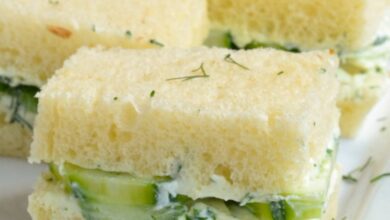
Daisy Delights: Exploring the Edible and Medicinal Wonders of Daisy Buds
In the diverse world of flowering plants, daisies stand out for their emblematic beauty and symbolic purity. However, beyond their aesthetic appeal, certain daisy varieties offer buds that are not only edible but packed with potential health benefits. This article aims to navigate through the most common daisy species, highlighting which buds can be safely enjoyed and which should be avoided. It’s important to note that while this guide provides valuable information, it is purely informative. For safe foraging and consumption, always consult with a professional botanist or a healthcare provider familiar with edible plants.
Edibility of Common Daisy Buds
Here’s a closer look at the top common daisy species and the edibility of their buds:
Common Daisy (Bellis perennis): Widely recognized for its small white petals and yellow disk, the buds of the common daisy are edible and have a history of use in traditional European medicine.
Shasta Daisy (Leucanthemum x superbum): Known for its large blooms that resemble the common daisy, Shasta daisy buds are also edible. They can be used similarly to common daisy buds, though they are less commonly consumed.
Oxeye Daisy (Leucanthemum vulgare): Another edible variety, Oxeye daisy buds are used in salads and herbal teas and are praised for their mild flavor and health benefits.
Gerbera Daisy (Gerbera jamesonii): While popular in floral arrangements for their bright and large flowers, Gerbera daisy buds are generally not consumed due to a lack of information on their edibility and potential medicinal uses.
Painted Daisy (Tanacetum coccineum): Not edible due to their content of pyrethrins, which are used as natural insecticides. Consumption of Painted daisy buds should be strictly avoided as they can be toxic.
Safety and Recommendations
When considering adding daisy buds to your diet, remember the following safety tips:
Proper Identification: Ensure you have correctly identified the daisy species. Misidentification can lead to the consumption of non-edible or toxic varieties.
Consultation: Always consult with a professional, especially if you are new to foraging or using daisies for health purposes.
Allergic Reactions: As with any new addition to your diet, start with small amounts to test for possible allergic reactions.
Through understanding which daisy buds are safe to consume and how to prepare them, we can explore a new dimension of culinary and medicinal uses provided by these common yet remarkable plants.
Health Benefits of Edible Daisy Buds
While daisies are commonly appreciated for their visual appeal in gardens and vases, the buds of certain daisy species also offer a range of health benefits. Consuming the edible buds of daisies like the common daisy, Shasta daisy, and Oxeye daisy can provide nutritional and medicinal advantages. Here are ten notable health benefits associated with the consumption of edible daisy buds:
Rich in Antioxidants: Daisy buds contain antioxidants that help combat oxidative stress and may reduce the risk of chronic diseases by protecting cells from damage.
Anti-inflammatory Properties: The anti-inflammatory effects of daisy buds can help alleviate symptoms of inflammatory conditions such as arthritis and may reduce general inflammation in the body.
Supports Immune System: Consuming daisy buds can boost the immune system thanks to their content of vitamins and beneficial compounds, aiding the body in warding off infections.
Skin Health: Applied topically or consumed, the nutrients in daisy buds can promote healthier skin, reduce acne, and enhance skin healing and appearance.
Digestive Aid: Daisy buds are known to help improve digestion and relieve common digestive issues like bloating and indigestion.
Natural Detoxification: Their diuretic properties help flush toxins from the body, supporting liver health and promoting urinary tract function.
Respiratory Benefits: Daisy buds can be used in teas to soothe the respiratory tract, making them beneficial for those with coughs or colds by acting as an expectorant.
Heart Health: Some studies suggest that the compounds in daisy buds may help reduce blood pressure and cholesterol levels, contributing to better cardiovascular health.
Sedative Effects: The mild sedative properties found in daisy buds can aid in relaxation and help improve sleep quality.
Nutrient-Rich: Daisy buds offer a range of essential vitamins and minerals, contributing to overall health and helping to fill nutritional gaps in the diet.
Lire la suite en page suivante
These health benefits make edible daisy buds a valuable addition to a health-conscious diet. Integrating these buds into your culinary practices not only adds a unique flavor and texture but also leverages their medicinal properties for enhanced wellness. In the next section, we’ll explore practical ways to incorporate daisy buds into your daily routine to fully benefit from their remarkable properties.
Leveraging the Benefits of Daisy Buds
With their array of health benefits, integrating daisy buds into your daily routine can be a simple and effective way to enhance your overall wellness. Here are practical ways to incorporate edible daisy buds into your diet and lifestyle, ensuring you make the most of their medicinal and nutritional advantages.
Culinary Uses of Daisy Buds
Raw in Salads: Fresh daisy buds can add a crisp, slightly bitter flavor to salads. They mix well with other greens and salad ingredients, offering a burst of nutrients.
Herbal Teas: Steeping daisy buds in hot water makes a soothing herbal tea that can help calm the mind and soothe the digestive system.
Cooked Dishes: You can incorporate daisy buds into soups, stews, or sauté them with a bit of olive oil and garlic for a nutritious side dish.
Innovative Recipes
Daisy Bud Pesto: Use daisy buds as a substitute for basil in traditional pesto for a unique twist on a classic sauce.
Pickled Daisy Buds: Pickle daisy buds in vinegar with spices for a tangy, healthy condiment that can enhance the flavor of many dishes.
Daisy Bud Infusions: Create infusions or decoctions with daisy buds to use as health-promoting drinks or as bases for soups and sauces.
Lire la suite en page suivante
Tips for Maximizing Benefits
Start Small: If you’re new to eating daisy buds, start with small amounts to see how your body reacts and to gradually integrate them into your diet.
Diverse Use: Mix daisy buds with other herbs and edible flowers to enjoy a variety of flavors and health benefits.
Topical Applications: Consider using daisy bud infusions as part of your skincare routine to take advantage of their anti-inflammatory and skin-healing properties.
Embracing Daisy Buds for Health and Flavor
Daisy buds, often overlooked, are a potent natural resource for health and culinary creativity. By incorporating these edible buds into our diets, we unlock a spectrum of benefits that promote better health, from improved immune function to enhanced skin health and digestive wellness. Embracing daisy buds not only diversifies our diet but also enriches our understanding and appreciation of the natural benefits these plants offer. Let’s celebrate these modest buds by making them a staple in our quest for a more nutritious and balanced lifestyle, proving that even the smallest parts of nature can have a substantial impact on our well-being.
Inspired by this? Share the article with your friends!




